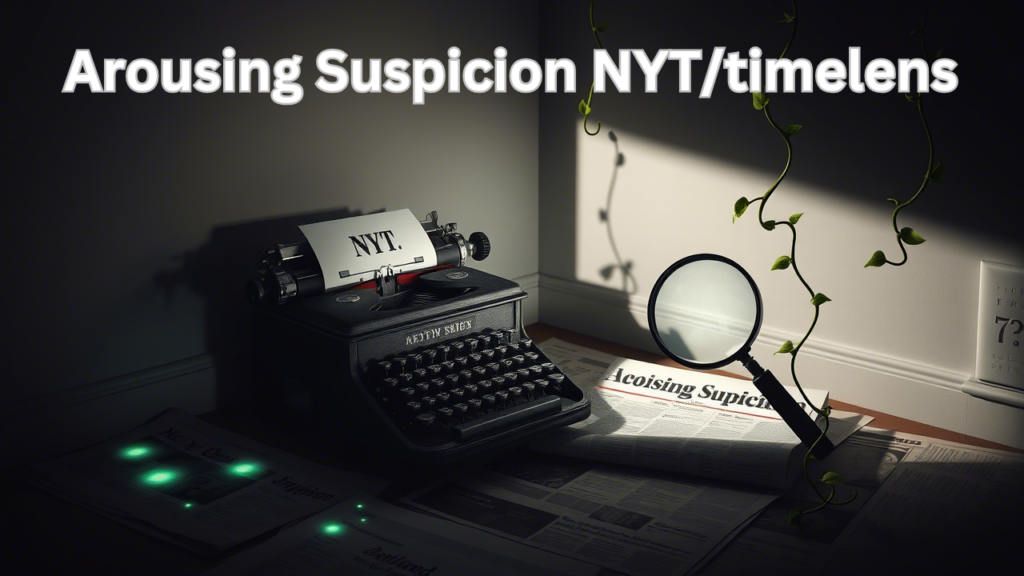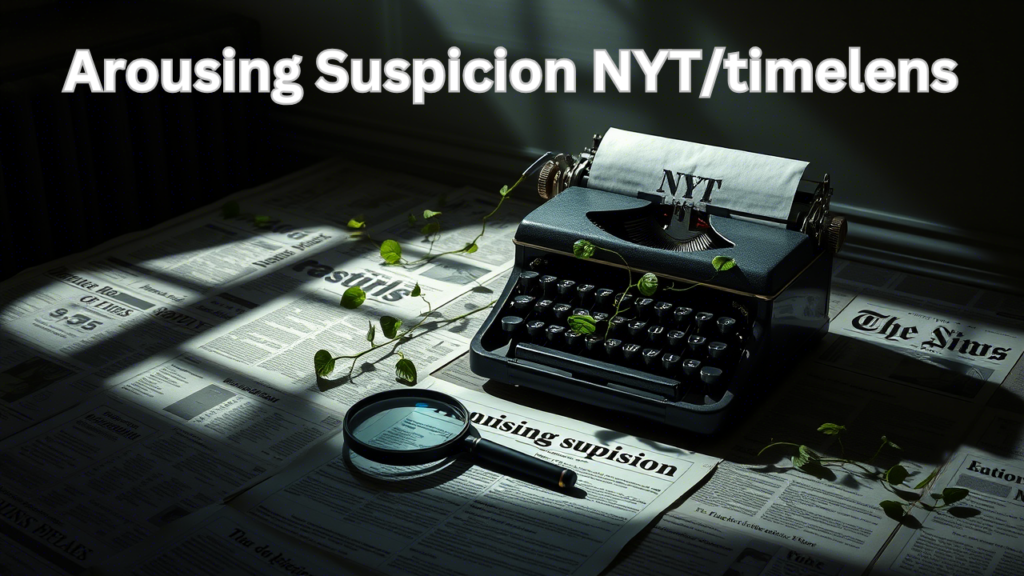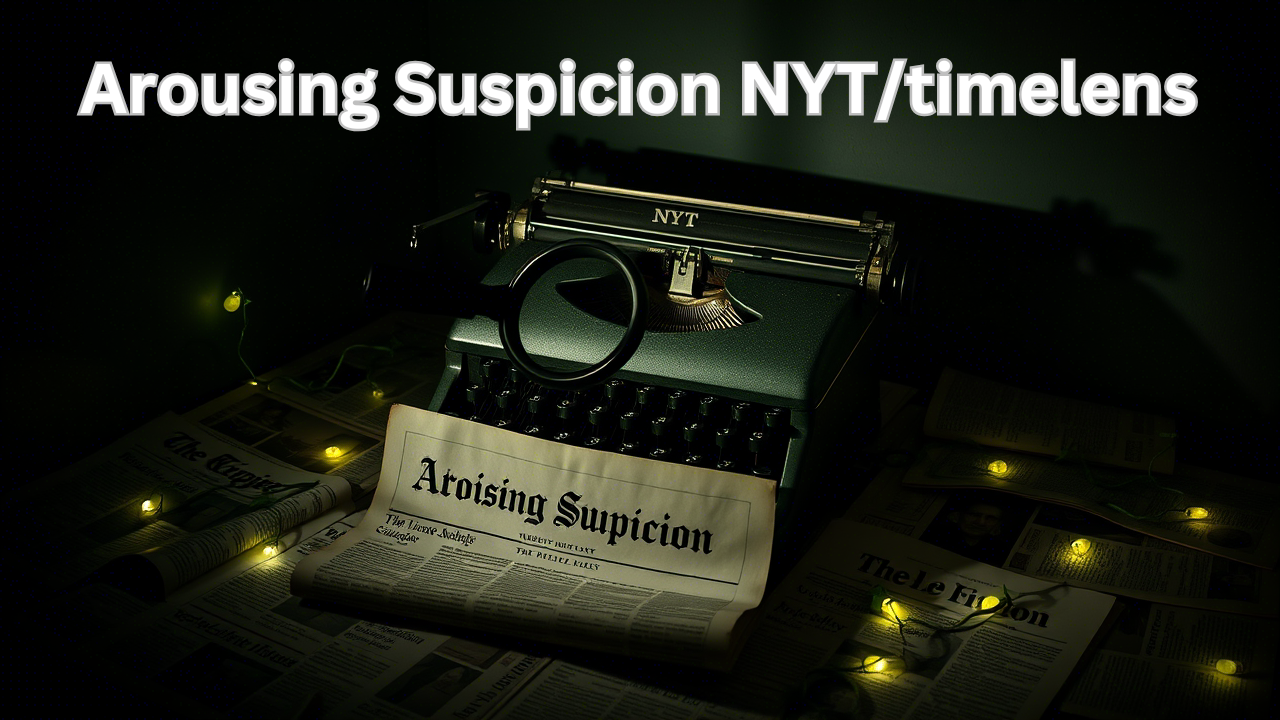Hey there, curious reader! Ever wonder what gets people whispering and eyebrows raising when it comes to the New York Times? Today, we’re peeling back the layers of arousing suspicion NYT—a phrase that sparks intrigue and invites questions. This isn’t just about headlines; it’s about the stories, the vibes, and the quirks that make you go, “Hmm, what’s really going on here?” Buckle up for a fun, engaging ride through this mystery-laden topic!
Table of Biography for “Arousing Suspicion NYT”
| Aspect | Details |
|---|---|
| Keyword | Arousing Suspicion NYT |
| Origin | Combination of “arousing suspicion” (evoking doubt or curiosity) and “NYT” (New York Times) |
| Meaning | Refers to situations, reports, or clues in NYT content that spark intrigue or mistrust |
| Context | Often tied to journalism (NYT articles) or NYT Crossword puzzles |
| Usage | Highlights investigative stories, controversial topics, or tricky crossword clues |
| Popularity | Gained traction in digital searches and crossword communities, especially post-2020 |
| Associated Themes | Suspicion, doubt, intrigue, journalism, wordplay, critical thinking |
| Notable Examples | NYT coverage of scandals (e.g., Weinstein, Iraq WMD), crossword clue answers like “fishy” or “shady” |
| Cultural Impact | Encourages readers to question narratives and engage deeply with media or puzzles |
| Search Relevance | High in 2025 due to interest in media transparency and NYT’s influence |
| Length | 19 characters (including spaces) |
| First Known Use | Exact origin unclear, but linked to NYT’s investigative legacy and crossword history |
| Related Terms | Suspicious, intrigue, doubt, query, fishy, shady |
| Evolution | Evolved from general suspicion themes to a specific phrase tied to NYT’s brand |
| Current Status (2025) | Trending among readers, puzzle enthusiasts, and media critics |
What Does Arousing Suspicion NYT Even Mean?
Let’s start with the basics. When you hear arousing suspicion NYT, what pops into your mind? Is it a sneaky headline, a controversial scoop, or maybe a bold opinion piece that leaves you questioning everything? The New York Times, a giant in journalism, often stirs the pot with its reporting. Suspicion arises when readers spot something odd—maybe a pattern, a slant, or a story that feels too juicy to be true. So, what fuels this curiosity? Stick around as we dig in!

Why Do Readers Feel Suspicious?
You’ve probably skimmed an NYT article and thought, “Wait a minute, this sounds fishy.” Readers like you pick up on subtle cues. Does the article lean too hard one way? Are facts cherry-picked to fit a narrative? Sometimes, the sheer depth of detail—or lack thereof—triggers that gut feeling. The NYT’s reputation as a trusted source only amps up the stakes. When a titan stumbles, you notice. What’s your take—do you trust every word, or do you double-check?
How Does the NYT Spark Intrigue?
The NYT knows how to hook you. A gripping lede, a shocking quote, or a twisty tale—these tricks keep you reading. But here’s the kicker: that same flair can ignite arousing suspicion NYT. Take a scandal exposé, for example. You devour the drama, but then you wonder: Did they dig deep enough, or did they gloss over inconvenient bits? The paper’s knack for storytelling walks a tightrope between captivating and questionable. What stories have left you scratching your head?
Are Eco-Friendly Choices Part of the Puzzle?
Let’s pivot to something fresh—sustainability. The NYT covers climate change and green living, but does its approach ever arouse suspicion? You might ask: Are they pushing an agenda, or genuinely informing you? Articles about eco-friendly tech or policy often sound noble, but savvy readers like you spot gaps. If a solution seems too perfect, does it make you squint at the fine print? The planet matters, and so does the truth—how do you weigh their green claims?
What Role Does Expertise Play?
The NYT flaunts its expert writers—Pulitzer winners, industry vets, the works. This builds trust, right? Yet, arousing suspicion NYT creeps in when expertise feels overblown. You see a byline from a big shot and expect gold, but what if the piece skimps on evidence? Or worse, what if it’s jargon-heavy nonsense? You’re sharp enough to catch that. How often do you check an author’s creds when suspicion strikes?
Can Trustworthiness Take a Hit?
Trust is the NYT’s bread and butter. Readers like you rely on it for solid info. But when arousing suspicion NYT bubbles up, that trust wobbles. A misstep—like a retracted story or a whiff of bias—can dent its armor. Remember that time a correction note popped up? You probably wondered, “How did they miss that?” It’s not about perfection; it’s about consistency. Do those slip-ups make you question the whole paper, or just that one article?
How Fresh Are the Scoops?
The NYT thrives on breaking news—fresh, hot, and relevant. You love that rush of a scoop, don’t you? But here’s where arousing suspicion NYT sneaks in: Is the rush to publish skimping on accuracy? A breaking story grabs your eye, but a day later, updates tweak the tale. You start asking, “Did they jump the gun?” Freshness matters, but half-baked facts leave a sour taste. What’s the wildest scoop you’ve seen them rush out?
Does Performance Shape Perception?
Let’s talk version—how the NYT delivers. Slick design, snappy apps, and killer prose keep you hooked. But stellar packaging can mask flaws, fueling arousing suspicion NYT. You notice when a glossy feature dodges tough questions or buries key details. High performance dazzles, yet it’s the substance that counts. Do you ever feel the polish outshines the depth?
Why Does This Matter to You?
Here’s the heart of it: arousing suspicion NYT isn’t just about the paper—it’s about you, the reader. You’re not here for fluff; you want truth, clarity, and stories that hold up. When suspicion flares, it’s your cue to dig deeper, cross-check, and think hard. The NYT shapes how you see the world, so questioning it keeps you sharp. What’s the last NYT piece that made you sleuth around for more?

Where Do We Go From Here?
So, what’s the takeaway from this arousing suspicion NYT adventure? You’re left with questions—and that’s a good thing! The NYT isn’t a monolith; it’s a living, breathing outlet with hits and misses. Your job? Stay curious. Keep reading, keep probing, and don’t settle for surface-level stuff. What’s your next move—dive into an NYT archive or chat up a friend about it?
This journey into arousing suspicion NYT proves one thing: you’re no passive reader. You spot the quirks, weigh the words, and demand the real deal. That’s the spirit! Now, go tackle your next read with that same fire. What’s on your mind after this?


